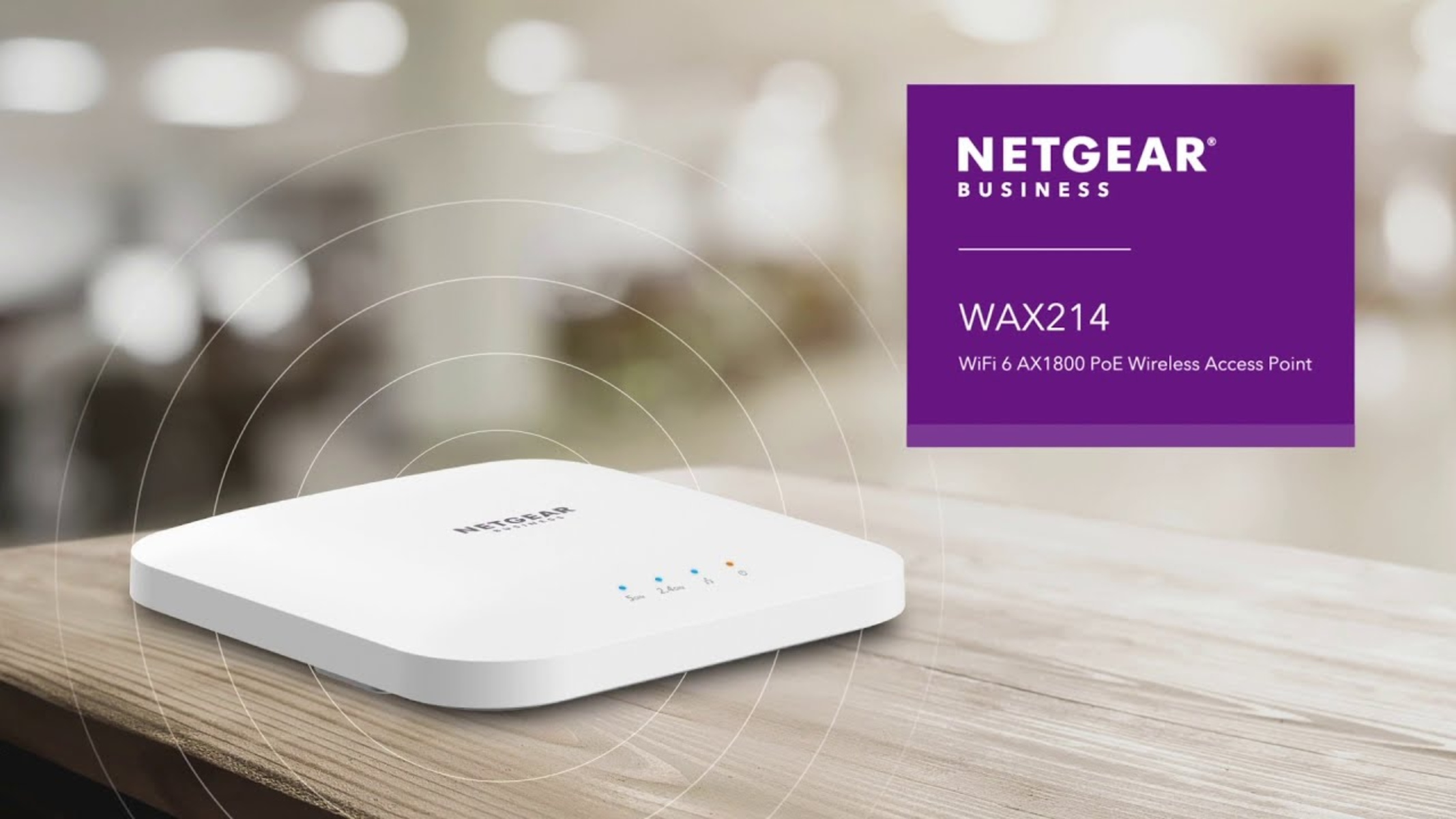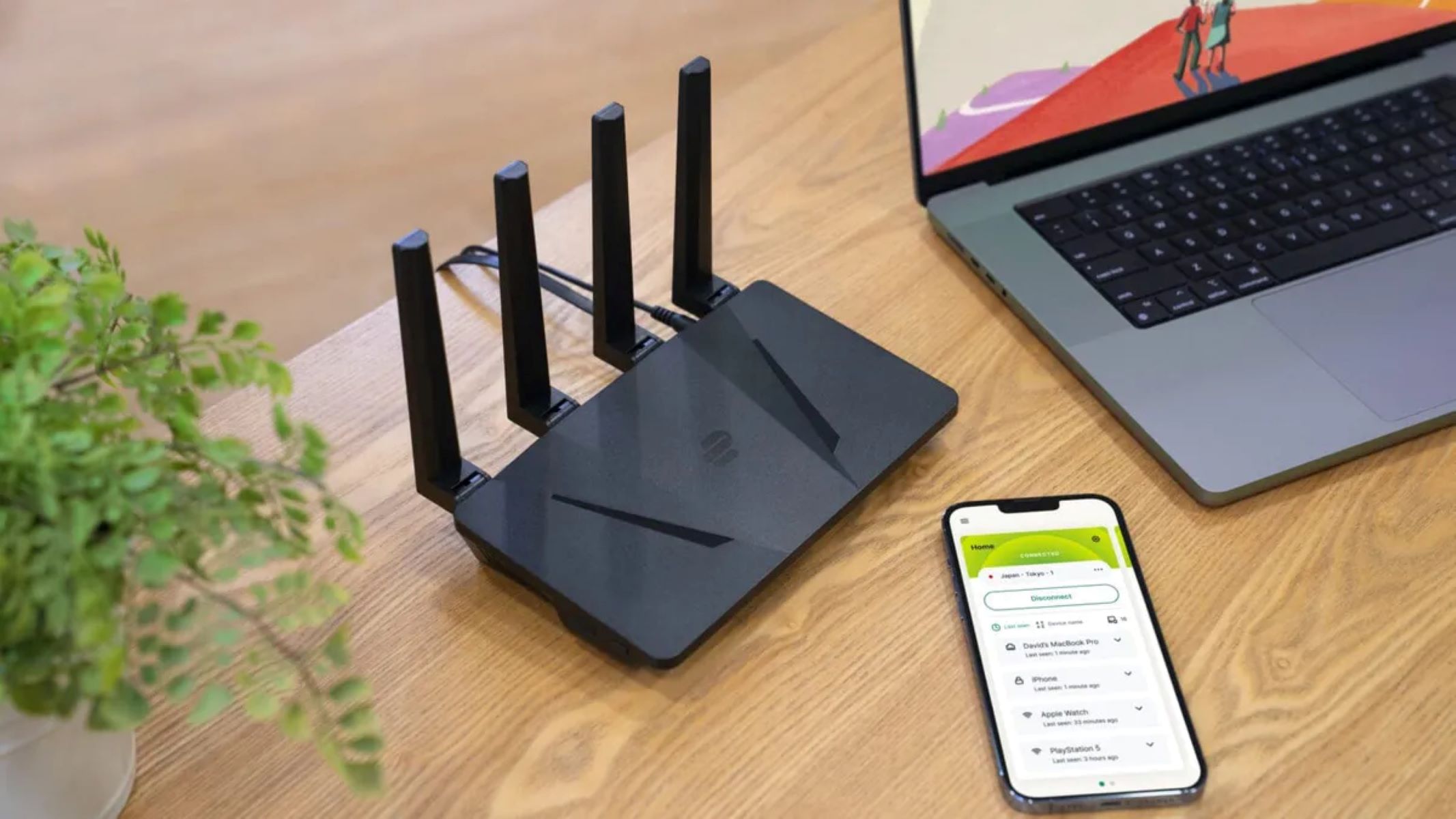Introduction
Wireless networks have become an essential part of our daily lives, providing us with the flexibility and convenience to stay connected without the need for physical cables. Whether it’s at home, in the office, or at a public hotspot, we rely on wireless networks to access the internet, share files, and communicate with others.
However, with the increasing reliance on wireless networks, it is important to understand the various features and mechanisms that allow or reject client connections. These features play a crucial role in ensuring the security, efficiency, and reliability of the wireless network.
In this article, we will explore some of the key features that govern client connections on a wireless network, including authentication, MAC address filtering, encryption, network key, hidden SSID, access control, firewall, guest network, bandwidth control, and quality of service (QoS).
By understanding these features and their implications, network administrators and users can make informed decisions to optimize the performance and security of their wireless networks.
So, let’s dive in and explore the fascinating world of wireless network connections!
Authentication
Authentication is a critical feature on wireless networks that ensures only authorized devices can connect to the network. It acts as a security measure to prevent unauthorized access and protect sensitive information.
There are different types of authentication methods available for wireless networks. One common method is Wi-Fi Protected Access (WPA) or Wi-Fi Protected Access II (WPA2), which requires users to provide a password or passphrase during the connection process. This ensures that only individuals who know the correct authentication credentials can join the network.
In enterprise environments, an additional layer of security called Extensible Authentication Protocol (EAP) is often implemented. EAP allows for more advanced authentication methods such as certificate-based authentication, smart card authentication, or even biometric authentication, adding an extra level of protection to the wireless network.
Authentication is crucial in preventing unauthorized users from accessing the network and potentially compromising sensitive data. It also helps in monitoring and tracking the devices that connect to the network, enabling network administrators to identify and address any security concerns effectively.
It is important for network administrators to choose strong and unique authentication credentials for their wireless networks. This includes using complex passwords or passphrases that are not easily guessed. Regularly updating and changing the authentication credentials can further enhance the security of the network.
It is also worth noting that open networks, which don’t require authentication, should be used with caution. These networks are more vulnerable to unauthorized access and can pose a significant risk to the security of the connected devices and the network itself.
By implementing robust authentication mechanisms, wireless networks can ensure that only authorized users and devices are granted access, mitigating the risk of security breaches and maintaining the integrity of the network.
MAC Address Filtering
MAC address filtering is a method used by wireless networks to control access based on the Media Access Control (MAC) addresses of devices. A MAC address is a unique identifier assigned to each network interface card (NIC) or Wi-Fi adapter.
With MAC address filtering, network administrators can create a whitelist or a blacklist of MAC addresses, determining which devices are allowed or denied access to the network. When a device attempts to connect to the network, the wireless access point (WAP) checks the device’s MAC address against the configured MAC address list.
To implement MAC address filtering, network administrators need to gather the MAC addresses of the devices they want to allow or block. They can manually enter these addresses into the network’s settings or use a network management tool to automate the process.
MAC address filtering provides an extra layer of security, as it allows network administrators to specify precisely which devices are permitted to connect to the network. This is particularly useful in environments where only specific devices are authorized or when administrators want to restrict access to known devices.
However, it’s worth noting that MAC address filtering is not foolproof and can be bypassed by network-savvy individuals. MAC addresses can be spoofed or cloned, allowing unauthorized devices to masquerade as authorized ones. Additionally, managing a large number of MAC addresses can be cumbersome and time-consuming.
Despite these limitations, MAC address filtering can still be a useful security measure when used in conjunction with other authentication methods, such as WPA2. Combining MAC address filtering with strong authentication credentials adds an extra layer of protection, making it more challenging for unauthorized devices to gain access to the network.
Network administrators should regularly review and update the MAC address filter list to maintain security. Removing old devices and adding new ones as needed ensures that only currently authorized devices can connect to the network.
MAC address filtering is a powerful feature in wireless networks that provides control over device access. By leveraging this feature, network administrators can enhance the security of their wireless networks and safeguard against unauthorized connections.
Encryption
Encryption is a crucial feature in wireless networks that ensures the confidentiality and integrity of data transmitted over the network. It encodes the information in a way that can only be understood by authorized recipients, protecting it from interception and unauthorized access.
There are different encryption protocols used in wireless networks, with the most common being Wi-Fi Protected Access II (WPA2) and its predecessor, WPA. These protocols utilize advanced encryption algorithms, such as Advanced Encryption Standard (AES), to secure the data transmitted between devices.
Encryption works by converting plaintext data into ciphertext, making it unreadable without the decryption key. The encryption key is generated during the authentication process when a device successfully connects to the network. This key is used to encrypt and decrypt the data exchanged between the device and the wireless access point (WAP).
One of the critical aspects of encryption is the selection of a strong encryption key. A strong key should be long, complex, and not easily guessable. Network administrators are encouraged to use a combination of uppercase and lowercase letters, numbers, and special characters to create robust encryption keys.
WPA2 with AES encryption is considered highly secure and recommended for most wireless networks. It provides strong protection against eavesdropping, hacking, and other malicious activities. Older encryption protocols, such as Wired Equivalent Privacy (WEP), should be avoided as they are known to have vulnerabilities.
It’s important to note that encryption goes hand in hand with authentication. Both features work together to ensure the security of wireless networks. Without encryption, even if a network requires authentication, data transmitted between devices could still be intercepted and compromised.
Wireless networks that handle sensitive information, such as financial transactions or personal data, should prioritize the use of encryption to protect against unauthorized access and data breaches. Encryption not only safeguards the privacy of users but also helps to uphold the integrity of the network and build trust among its users.
It is essential to regularly update encryption protocols and ensure that devices connected to the network support the latest encryption standards. This helps to address security vulnerabilities and protect against emerging threats.
By implementing strong encryption protocols and maintaining up-to-date security practices, wireless networks can provide a safe and secure environment for data transmission, contributing to the overall protection of sensitive information.
Network Key
A network key is a cryptographic key used in wireless networks to provide secure access to the network. It is a vital component of the authentication and encryption process, ensuring that only authorized users can join the network and that data transmitted over the network remains secure.
When a device wants to connect to a wireless network, it must provide the correct network key or passphrase. This key is usually a sequence of characters or a password that is entered during the connection process. Once the key is verified, the device is granted access to the network.
The network key plays a critical role in the encryption of data transmitted over the network. It is used to generate encryption keys that are unique to the connection between the device and the wireless access point (WAP). These encryption keys are then used to encrypt and decrypt data, ensuring that it remains confidential and protected from unauthorized access.
Network keys can be configured in different ways, depending on the security requirements of the network. In home networks, a common approach is to use a pre-shared key (PSK), where all devices share the same network key or passphrase. This simplifies the setup process but requires that the key be adequately protected and not easily guessable.
In enterprise environments, more advanced methods, such as 802.1X authentication, can be used. This method involves the use of a centralized authentication server that validates the credentials of each device attempting to connect to the network. Each device is assigned a unique network key for their session, enhancing security and preventing unauthorized access.
Network administrators should follow best practices when it comes to selecting and managing network keys. This includes using strong and complex keys that are difficult to guess or brute force. Keys should be changed periodically, especially in shared networks, to maintain optimal security.
It’s also worth mentioning that network keys should be kept confidential and only shared with authorized users. Sharing network keys with unauthorized individuals or using easily guessable keys can compromise the security of the network and expose it to potential attacks.
By using strong and well-protected network keys, wireless networks can ensure that only authorized users can connect and that their data remains secure during transmission. Network keys form a crucial part of the overall security infrastructure of wireless networks and should be given careful consideration and management.
Hidden SSID
A Service Set Identifier (SSID) is the name assigned to a wireless network. By default, SSIDs are broadcasted so that devices can easily discover and connect to the network. However, some networks offer the option to hide the SSID, making the network invisible to devices that are not specifically configured to connect to it.
When the SSID is hidden, devices must manually input the network name to connect to the network. This hidden SSID feature is often regarded as a security measure, as it can help prevent casual users from discovering and attempting to connect to the network.
While hiding the SSID might seem like a useful security practice, it’s important to note that it does not provide a high level of security. Knowledgeable attackers can still detect and connect to a hidden network using specialized tools. In fact, hiding the SSID can sometimes attract the attention of hackers who see it as a challenge.
Furthermore, hiding the SSID can create usability challenges for legitimate users. They must manually enter the network name, which can be easily mistyped or forgotten. Additionally, devices attempting to automatically connect to networks might experience compatibility issues with networks that have hidden SSIDs.
It’s worth noting that even when the SSID is hidden, other aspects of network security, such as encryption and authentication, should still be implemented to protect the network and its users. These security measures provide a more robust defense against unauthorized access and data breaches.
Network administrators should carefully evaluate whether hiding the SSID aligns with the overall security goals and usability requirements of the network. In some cases, it may be more beneficial to prioritize strong encryption and authentication methods instead of relying solely on hiding the SSID.
Additionally, network administrators should continuously monitor their wireless networks for any suspicious activity, regardless of whether the SSID is hidden or not. Regularly reviewing access logs, implementing intrusion detection systems, and keeping network equipment firmware up to date are essential practices for maintaining network security.
Overall, hiding the SSID can offer a minimal level of additional security, but it should not be the sole measure relied upon. Implementing strong encryption, authentication, and other security measures will provide a more comprehensive approach to safeguarding wireless networks and ensuring the protection of sensitive data.
Access Control
Access control is a critical feature in wireless networks that allows network administrators to manage and control access to the network based on various criteria. It is an essential aspect of network security and ensures that only authorized devices and users can connect and interact with the network.
There are several methods of access control that can be implemented in wireless networks. One common approach is to use a defined access control list (ACL) that specifies the devices or users that are allowed or denied access to the network. This list can be based on MAC addresses, IP addresses, or other identifying information.
Another method is the use of user-based access control, where each user is assigned unique login credentials. This allows network administrators to grant specific permissions and access levels to individual users, ensuring that each user has appropriate access to network resources.
Network segmentation is also a form of access control that involves dividing the network into different segments or subnets. Each segment can have its own set of access control rules, allowing network administrators to isolate certain devices or groups of devices from others, enhancing security and preventing unauthorized access.
Access control can be enforced at various points within the network infrastructure. This includes at the wireless access point (WAP), the network switch, or even through the use of network firewalls. By implementing access control at multiple levels, network administrators can create a layered defense system, increasing the overall security of the network.
Regularly reviewing and updating access control rules is crucial to maintaining a secure network. Devices that are no longer authorized should be removed from access control lists, and new devices should be added as needed. Network administrators should also monitor access logs and be vigilant for any suspicious activity that may indicate unauthorized access attempts.
A robust access control system is essential for protecting the network from unauthorized access and potential security breaches. By carefully managing access to the network, network administrators can ensure that only authorized devices and users are given the necessary permissions to connect and interact with network resources.
It’s worth mentioning that access control is just one aspect of network security. It should be implemented alongside other security measures, including encryption, authentication, and regular system updates, to provide a comprehensive and effective security strategy for wireless networks.
Firewall
A firewall is a crucial component of network security, including wireless networks. It acts as a barrier between the internal network and external networks, monitoring and controlling incoming and outgoing network traffic based on pre-established security rules.
Firewalls play a significant role in protecting wireless networks by preventing unauthorized access, blocking malicious content, and identifying potential security threats.
There are two types of firewalls commonly used in wireless networks: software firewalls and hardware firewalls.
Software firewalls are installed on individual devices, such as computers or smartphones. They monitor and filter network traffic specific to the device they are installed on, providing an additional layer of protection against potential threats.
Hardware firewalls are dedicated devices that are placed at the network perimeter, such as at the entry point between the local network and the internet. They filter network traffic at a broader level, protecting the entire network from external threats.
Firewalls use a variety of techniques to analyze and control network traffic. These may include packet filtering, stateful inspection, and application-level gateway filtering.
Packet filtering examines the header information of each packet to determine whether to allow or block it. It evaluates factors such as the source and destination IP addresses, ports, and protocol types. Stateful inspection, on the other hand, keeps track of the state of network connections and only permits packets that are part of legitimate connections.
Application-level gateway filtering goes beyond packet-level filtering and examines the actual content of the network traffic. It can inspect the payload of packets and make decisions based on the specific applications or protocols being used.
In an era where cyber threats are prevalent, firewalls are crucial in preventing unauthorized access and protecting wireless networks from various types of attacks, including hacking attempts, malware, and other malicious activities.
However, it is important to note that firewalls are not a standalone solution and should be used in conjunction with other security measures. These may include encryption, authentication, access control, and regular security updates.
Network administrators should regularly review and update firewall rules to adapt to changing security threats and evolving network requirements. They should also monitor firewall logs for any suspicious activities and take appropriate action to mitigate potential risks.
By implementing and maintaining robust firewall solutions, wireless networks can establish a strong defense against external threats and ensure the security and integrity of the network and its connected devices.
Guest Network
A guest network is a separate and isolated network within a wireless network infrastructure, specifically designed for guest users. It provides a secure and controlled environment for visitors to connect to the internet without accessing the main network resources or compromising the security of the internal network.
Guest networks are commonly implemented in environments such as offices, hotels, coffee shops, and other public places where visitors require internet access. They offer a convenient and secure way for guests to connect to the internet, while also protecting the privacy and security of the main network.
One of the main benefits of a guest network is that it ensures the separation of guest users from internal network resources, such as files, printers, and other devices. This separation prevents unauthorized access and potential security breaches.
When a guest connects to a guest network, they are typically directed to a captive portal or splash page where they must agree to terms and conditions before obtaining internet access. This allows network administrators to set usage policies, such as time limits or acceptable use policies, ensuring that the network is used responsibly.
Guest networks should be configured with limited access rights and restricted network permissions. This includes blocking access to sensitive data, internal servers, and network resources. It is crucial to implement robust security measures, including encryption and firewall protections, to safeguard the guest network from potential threats.
Regularly updating and patching the guest network’s firmware and software is critical to addressing security vulnerabilities and ensuring a secure environment for both guests and the main network.
Additionally, network administrators should consider segmenting guest networks from other internal networks to prevent potential attacks or unauthorized access from spreading to more critical areas of the network.
Guest networks offer an added layer of security and convenience for both businesses and visitors. By providing a separate network for guest users, organizations can maintain the integrity and security of their internal network while offering a secure and reliable internet connection to their guests.
It’s important to recognize that while guest networks provide a controlled and secure environment, they should not be considered completely immune to security risks. Network administrators should regularly monitor the usage and traffic of the guest network, implement intrusion detection systems, and maintain strong security practices to mitigate potential threats.
By implementing and managing a guest network properly, businesses and organizations can protect their network resources, maintain a positive guest experience, and uphold the security and integrity of their wireless network infrastructure.
Bandwidth Control
Bandwidth control is a crucial feature in wireless networks that allows network administrators to allocate and manage the available bandwidth among different devices and users. By regulating the flow of data, bandwidth control ensures fair and efficient utilization of network resources.
In a wireless network, bandwidth refers to the amount of data that can be transmitted and received within a given time frame. The available bandwidth is shared among all connected devices, and without proper control, some devices may consume an unfair portion, resulting in slower speeds and degraded performance for others.
Bandwidth control enables network administrators to prioritize and allocate bandwidth based on specific needs and requirements. This can be particularly useful in situations where multiple devices or users are vying for limited resources.
One common method of bandwidth control is the implementation of Quality of Service (QoS) policies. QoS allows network administrators to assign different levels of priority to different types of network traffic, ensuring that critical applications or services receive adequate bandwidth to function properly.
For example, in a business environment, video conferencing or voice over IP (VoIP) communication may require higher priority and more bandwidth compared to web browsing or file downloads. By assigning appropriate QoS settings, network administrators can ensure smooth and uninterrupted communication for critical applications.
Bandwidth control can also help prevent bandwidth abuse or excessive data consumption by specific devices or users. By setting limits or implementing traffic shaping mechanisms, network administrators can control the amount of bandwidth allocated to individual devices, preventing any one device from monopolizing the network resources.
In addition to controlling the allocation of bandwidth, network administrators may also implement bandwidth throttling. Throttling involves intentionally limiting the speed or data transfer rate for certain devices or types of network traffic to maintain a stable and fair network performance.
Bandwidth control is particularly important in shared environments, such as public Wi-Fi hotspots or office networks. It ensures that all users have an equal opportunity to access and utilize the available network resources, providing a fair and satisfactory user experience.
Network administrators should regularly monitor network traffic, assess the bandwidth needs of different applications and users, and make necessary adjustments to bandwidth control settings accordingly. This allows for optimal network performance and prevents congestion or bottlenecks.
By implementing effective bandwidth control mechanisms, network administrators can ensure efficient utilization of network resources, improve user experience, and maintain a stable and reliable wireless network environment.
Quality of Service (QoS)
Quality of Service (QoS) is a feature in wireless networks that allows network administrators to prioritize certain types of network traffic over others. It ensures that critical applications or services receive the necessary bandwidth and network resources they require, resulting in improved performance, reduced latency, and enhanced user experience.
QoS is particularly important in environments where there is limited bandwidth or where different types of network traffic compete for resources. By implementing QoS policies, network administrators can guarantee that essential applications such as voice and video communication, online gaming, or real-time streaming receive optimal network performance, even during periods of high network congestion.
There are different techniques and mechanisms for implementing QoS in wireless networks. One common method is traffic prioritization or traffic shaping, where certain types of network traffic are assigned higher priority and receive preferential treatment.
Another technique is bandwidth reservation, where a specific amount of bandwidth is reserved exclusively for a particular application or service. This ensures that even during periods of high network utilization, the reserved bandwidth is always available for the designated application or service.
Network administrators can also utilize traffic classification and packet queuing to control and manage network traffic more efficiently. By classifying and prioritizing different types of traffic, network administrators can allocate resources based on their importance, ensuring that time-sensitive data, such as voice or video streams, are prioritized over less time-critical traffic.
QoS can also be implemented based on specific requirements, such as bandwidth guarantees or latency thresholds. This allows network administrators to define and enforce specific performance levels for critical applications, ensuring that they consistently meet the required service levels.
It’s important to note that the effectiveness of QoS in wireless networks depends on proper configuration and ongoing monitoring. Network administrators need to regularly assess network traffic patterns, adjust QoS settings as needed, and address any issues or bottlenecks promptly.
Furthermore, QoS is just one aspect of network performance optimization. It should be implemented in conjunction with other network management practices, such as bandwidth control, access control, and proper network design, to provide a comprehensive solution for ensuring efficient and reliable network performance.
By implementing QoS in wireless networks, organizations can ensure that critical applications receive the necessary network resources, providing an optimal user experience, and maximizing the efficiency of network utilization. QoS plays a crucial role in managing network traffic, reducing latency, and maintaining the performance of essential applications and services.
Conclusion
Wireless networks have become an integral part of our daily lives, providing us with the flexibility and convenience of staying connected without the need for physical cables. However, ensuring the security, efficiency, and reliable performance of wireless networks requires the implementation of various features and mechanisms.
Authentication is a vital feature that verifies the identity of devices and users connecting to the network, preventing unauthorized access and protecting sensitive information. MAC address filtering adds an extra layer of security by allowing network administrators to control access based on unique MAC addresses.
Encryption safeguards data transmitted over the network by encoding it in a way that can only be understood by authorized recipients. Network keys play a crucial role in authentication and encryption, ensuring secure access to the network and protecting data integrity.
Features such as a hidden SSID and access control further enhance network security, preventing easy identification and mitigating unauthorized access. Firewalls act as a barrier between the internal network and external networks, monitoring and controlling incoming and outgoing traffic.
A guest network provides a separate and secure environment for visitors to connect to the internet without compromising the security of the main network. Bandwidth control ensures fair and efficient utilization of network resources by allocating and managing available bandwidth among connected devices and users.
Quality of Service (QoS) allows network administrators to prioritize specific types of network traffic, ensuring optimal performance for critical applications and services.
In conclusion, implementing these features and mechanisms in wireless networks is essential for maintaining the security, efficiency, and reliable performance of the network. Regular monitoring, updates, and adherence to best practices are necessary to address emerging security threats and ensure the smooth operation of wireless networks in today’s interconnected world.

























